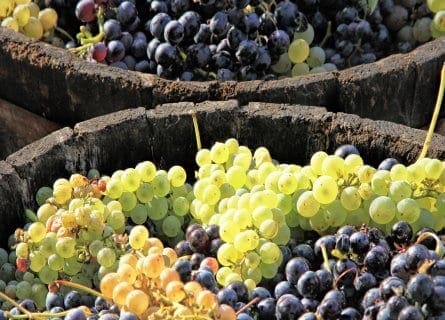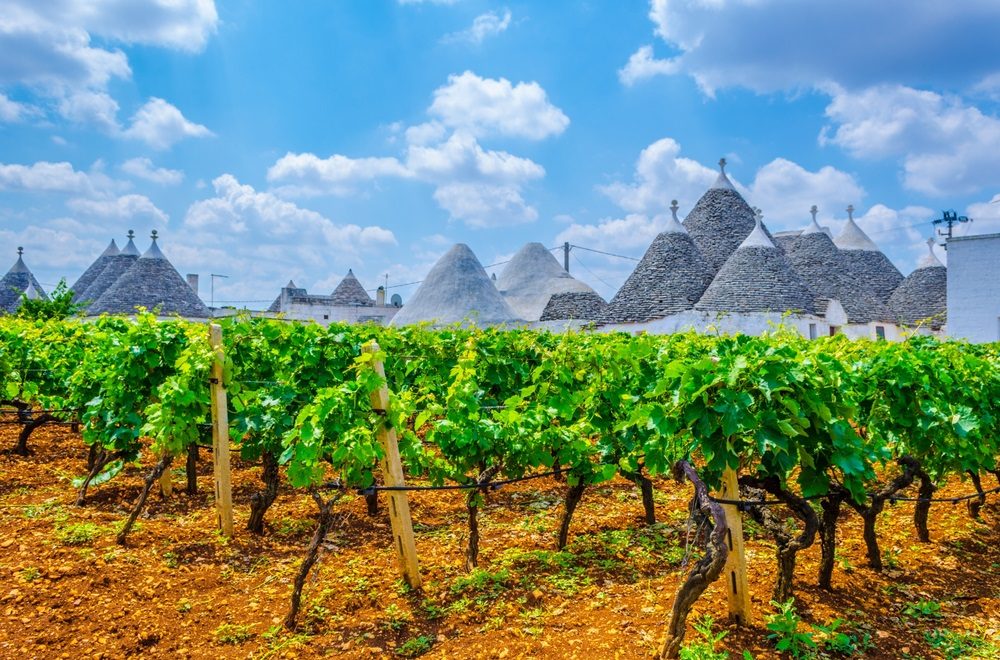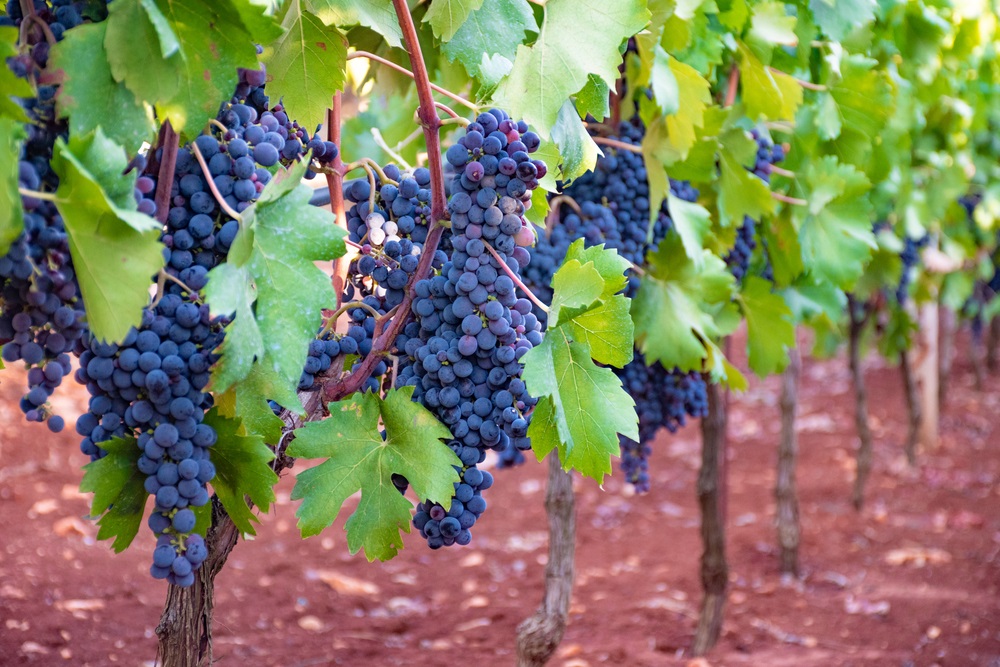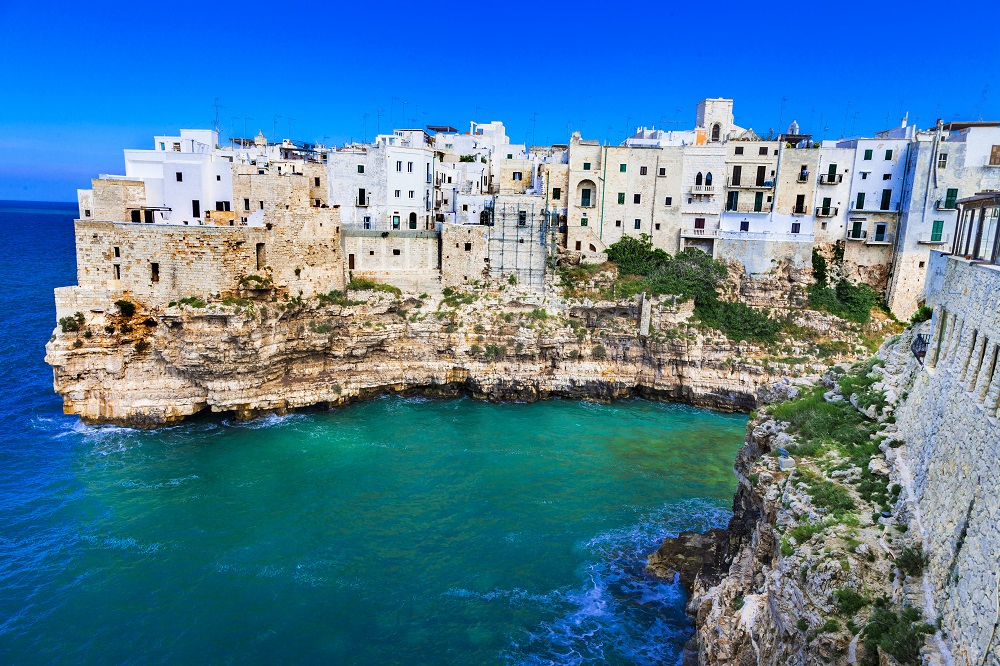
French Grape Varietals
May 4, 2017
Explore France's exquisite grape varietals: from Bordeaux's Cabernet Sauvignon to Burgundy's Pinot Noir. Savor the diverse flavors of French wine! 🍷
By: James lawrence / Last updated: February 3, 2025
Estimated reading time: 7 minutes
There is no mistaking a glass of ripe, powerfully scented Primitivo. How would we describe its signature aroma and flavor? The best analogy would be jumping headfirst into a saucepan of freshly made blackberry and plum jam. Primitivo is many things, but it is rarely understated. This grape is about delivering pleasure – glorious, untamed, hedonistic pleasure. Its immense concentration of warm berry flavors and velvety tannins are irresistible, mainly if your gastronomic preferences involve red meat. Naysayers would deride Primitivo as unsubtle or unsophisticated – they may have the ghost of a point. But there is no denying the grape’s enormous appeal.

Guide to Italian Red Wine: Read more
For this reason, Primitivo has many acolytes and adoring fans. However, many of its most enthusiastic supporters would never refer to the grape by its Italian name. Primitivo is known as Zinfandel in California. Same grape, different synonym. It was regarded as California’s signature export for a century until it was proven that, as Primitivo, it had been grown in Italy since the 1700s. Once again, the miracle of science and DNA sequencing had unlocked a great mystery of the viticultural world. An extensive DNA analysis discovered that Primitivo owes its origins to Croatia. Many agree that Primitivo is a mutation of Tribidrag, an indigenous variety native to Croatia introduced to southern Italy in the 18th century.
According to legend, Don Francesco Filippo Indellicati planted some cuttings in the district of Li Ponti in Puglia. The grape subsequently spread across the region, becoming one of Italy’s most prolific grape varieties by the 19th century. It was as common a sight as olive groves and coastal sunsets. However, its destiny and role in Puglian wine culture have greatly changed over the past twenty years.
Historically, people did not associate the wilds of Puglia with high-quality wine. Quite the opposite, in fact: producers dedicated the ‘heel’ of Italy to creating large volumes of bulk wine. They sent gargantuan truckloads of alcoholic, fiercely tannic wines to central and northern Italy to add color and structure to rain-soaked vintages across the Tuscany and Piemonte regions. Puglia became synonymous with providing cheap blending material—a reputation that, unfortunately, still doggedly persists in some quarters.
But if contemporary attitudes are more important to you than past mistakes, Puglia is worth a second look. The area’s wine scene has recently changed beyond recognition; generous EU grants encouraged growers to pull up low-quality vines, which led to a much-needed reduction in the region’s output. Younger growers are increasingly focusing on quality rather than quantity. They have an impressive array of raw materials at their disposal: a complex tapestry of soils and microclimates, imported expertise, and old bush vines, yielding tiny berries of concentrated fruit. There are no obstacles to making exceptional wine in Puglia.
Of course, some of the region’s output is still blending material for northern Italy. The demand for Vermouth, grape concentrate, and sweetened blending material ensures that this market will never die out. However, the proportion of Puglian wine made expressly for discerning palates has increased dramatically since the turn of the Millennium. The cultivation and production of the Primitivo grape have been at the forefront of this revolution.
Primitivo means “early one” in Italian, referencing the grape’s tendency to ripen relatively early in the growing season. Some local growers dryly refer to Primitivo as “Mirr Test” (hard wine). They should know that generations of Puglian families have been growing this difficult variety for centuries. It provides much pleasure in your glass and is also a panoply of challenges in the vineyard.
Indeed, success with Primitivo does not come easy. Much will depend on the terroir’s suitability and the climate’s vagaries. The results aren’t pretty if Primitivo is planted on fertile soils at low altitude levels. The variety naturally produces massive yields unless one constantly checks its natural vigor. Yet, the vine also ripens unevenly and is prone to rot in wetter years. Conversely, in hotter vintages, Primitivo can ripen with a potential alcohol level of above 17% ABV. Sommeliers and critics have long derided these “alcoholic monsters” and “fruit bombs” for their harsh structure and unwieldy alcohol.

However, if the conditions are correct, Primitivo can produce utterly beguiling wine. The trick is discovering cooler sites in warm climates, particularly terroirs, which benefit from a high degree of diurnal temperature variation. The grape also responds well to Puglia’s iron-rich terroirs, finding an affinity with clay and sandy soils. The former has a competitive edge in hotter years due to its natural porosity. If the winegrower is religious about maintaining a low yield, Puglian Primitivo can be among Italy’s finest and long-lived wines.
Growers in this corner of Italy roughly categorize contemporary versions of Primitivo into two distinct camps. Some target a fruit-forward, easy-drinking style for consumption at a relatively young age. The style’s soft texture and accessible tannins have found a welcome audience with visitors to this gloriously unspoiled part of Italy. The fruit profile of young Primitivo promises pleasure: blackberries, figs, and often strawberries intermingle with notes of pepper and spice. The wine is ideal with roasted and grilled meat, particularly charcoal-seared steaks and cuts of lamb.
Alternatively, individual producers wish to distance Puglian Primitivo from its “sunshine in a bottle” connotation. They will work hard – often employing ancient bush vines and new American oak – to craft this noble grape’s structured, complex, and age-worthy expression. In its youth, the charms will not flow as easily. You should expect a more savory and tannic style, which will require a few years to open up. What emerges, however, more than justifies your patience. Sophisticated tannins, savory notes of forest floor, and a most appealing freshness will tame the concentrated black fruit. At its best, Primitivo does not play second fiddle to esteemed grapes like Sangiovese and Nebbiolo. It operates in the same class.
Today, three key sub-zones in Puglia produce exceptional Primitivo wines. The Primitivo di Manduria DOC is the most important appellation, created in 1974. It is one of the region’s oldest, home to approximately 900 hectares of vineyards. The zone also produces many delicious fortified and sweet wine styles, but the dry Primitivo wines have captured the attention of export markets.
The Gioia del Colle region further north has also shown great promise in recent years. Better site selection and more sophisticated winemaking have proven that ‘Italian Zinfandel’ can rival Californian versions in the quality stakes.
The most exciting developments are happening on the flat Salento peninsula, which has been Puglia’s leading vineyard for decades. Curiously, there are no significant variations in exposition and mesoclimates, yet the best terroir is considered exceptional. This is due to the region’s USP; vines benefit enormously from the cooling winds that blow off the Adriatic and Ionian seas. Fine wine can now be produced here thanks to a combination of improved viticulture and the significant moderating effects of these sea breezes. The best sites are in western Salento, located close to the coastal areas and at slightly higher altitudes. If the winemaker is a professional, then the results should be memorable. Judicious aging in American oak flatters top-quality Primitivo, imbuing the wine with added dimensions of flavor and structure.

Yet even premium terroir and brilliant winemaking cannot guarantee world-class Primitivo in the majestic landscape of Puglia. As elsewhere, global warming has cast a pernicious gaze on these vineyards; keeping the alcohol at balanced levels can increasingly be arduous, worsened by rising temperatures. Inflated yields and harsh tannins also remain a constant headache. Primitivo asks much of the winegrower and can sometimes disappoint. But it can produce incomparable, voluptuous magic in the right hands (and aided by a favorable growing season).
Crljenak Kaštelanski, Pribidrag, Tribidrag, Kratosija, Zenfendal, Zinfardel, Zinfindal, Zeinfandall, Zinfardell, Zinfindel, and Zinfandal.
If you would like us to customize an exclusive luxury tour, contact us and let us know your travel plans. We offer luxury food and wine tours for private groups of a minimum two guests. In addition, all of our private, chauffeured tours are available year-round upon request.


Palminosays:
December 25, 2020 at 9:34 am
"According to legend, Don Francesco Filippo Indellicati planted some cuttings in the district of Li Ponti, in Puglia." This is not correct, because he planted it in the country of Gioia del Colle. Exactly in Strada comunale delle Carrare where there is a big stone on which is remembered .